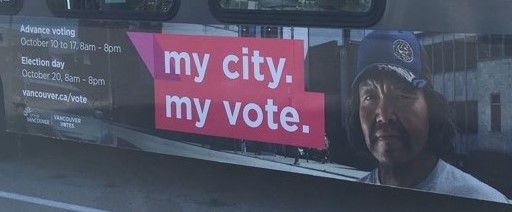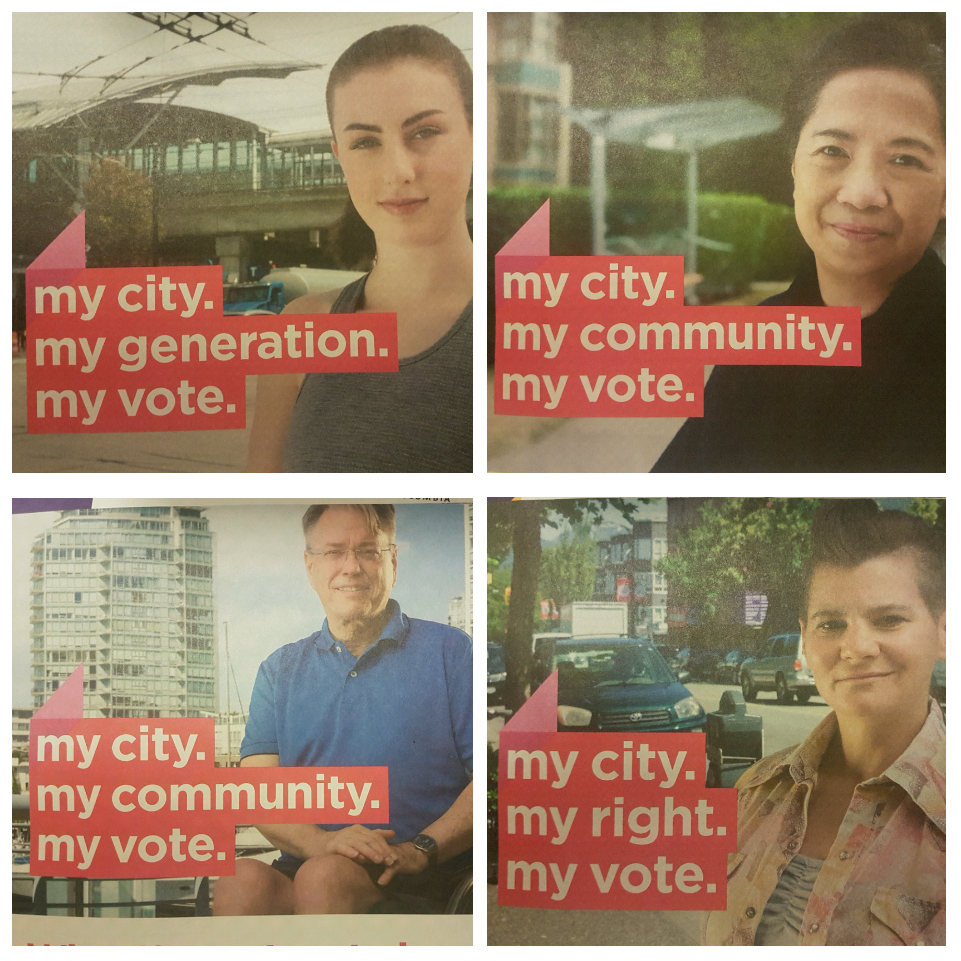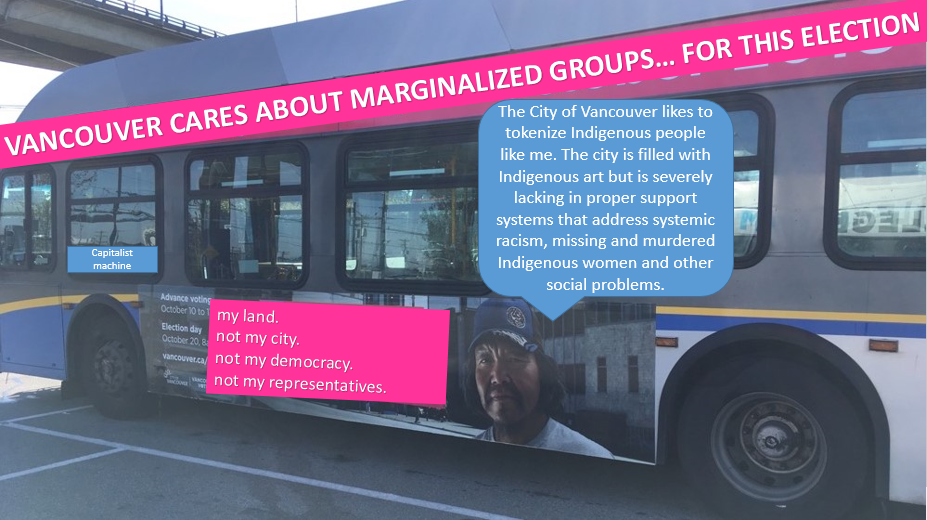
My City. My Vote.
This advertisement portrays an Indigenous man with the words “my city. my vote.” The intention here is to show the viewer that Vancouver’s marginalized communities’ votes matter in this election. As an Indigenous person the implications of this ad resonate personally. Indigenous people could not vote without disenfranchisement beginning in 1960, just over 58 years ago (CBC). There are a myriad of issues with Indigenous representation throughout the City of Vancouver. Most acts of reconciliation are taken at face-value, especially after many broken promised to uphold Indigenous issues such as investigations into Missing and Murdered Indigenous Women (MMIW), social housing, and support programs for low-income and marginalized residents. This city does not belong to Indigenous people, and so my intention in my culture jam is to point out the tokenization of Indigenous peoples by institutions that pretend to care especially during elections.
The absence and erasure of the Indigenous woman are of note here. The male-centered representation speaks to the Benoit, et al. and Torchalla, et al. articles about women in the downtown eastside (DTES) that face challenges in gaining access to health services that serve all of their needs. Torchalla et al. says “the numerical superiority of men in the DTES has created a dominantly male street culture and gendered risk environments in which women experience a particular marginalization, exploitation, increased safety risks and gender-based violence.” This ad is no different by representing a male Indigenous man in a public advertisement to represent the marginalized groups of the DTES.
In a recent news article it was reported that a new West End high-rise has two separate entrances; one for those in the social housing units and those who are condo owners (The Globe and Mail). The dichotomy of the rich and poor is entrenched in this act. It is racist, stereotypical and dehumanizing for those in the social housing units. This ad is not about inclusivity, it is about Vancouver’s self-image as an all-inclusive, accessible and affordable city for all, when state-sanctioned (city planning and permits allowed this) actions such as these refute these claims.

I must note that this ad campaign is part of a larger ad series. These images in connection to the image I am critiquing say that the City is reaching out to marginalized populations and urging them to vote, pushing the notion that Vancouver is an accessible and multiracial city for all.



